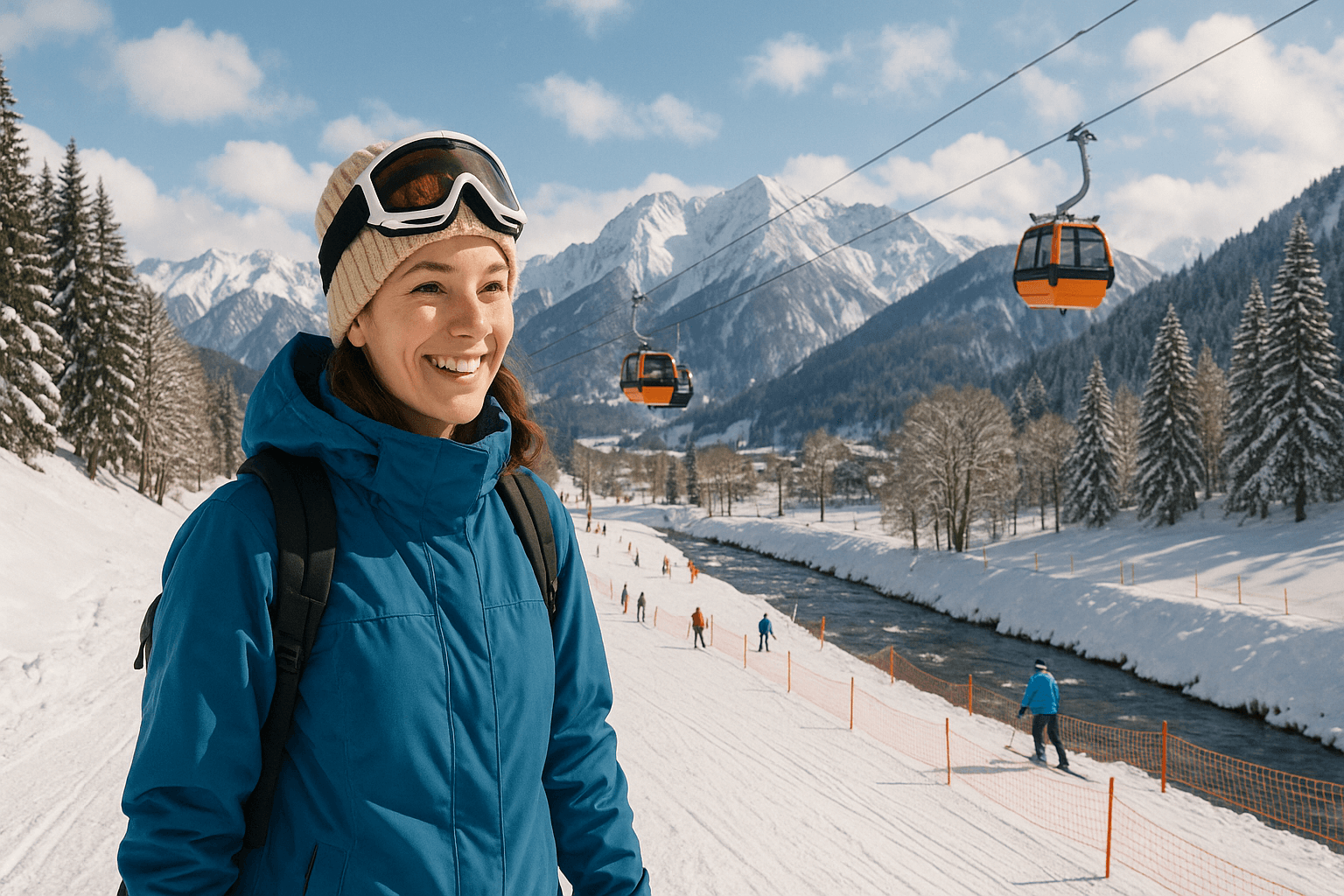When people think of Japan, cherry blossoms and neon-lit cities often come to mind. But there’s another season that transforms the country into a playground of powder snow, glowing lanterns, and steaming hot springs—winter. From world-class ski slopes to magical snow festivals and cozy onsen towns, Japan in winter is an adventure like no other.
This Japan winter travel guide explores the best ski resorts, iconic snow festivals, hot spring escapes, and essential tips to make your journey comfortable and unforgettable. Whether you’re a powder hound chasing perfect turns or a culture lover enchanted by snow lanterns and festivals, Japan’s winter will exceed your expectations.
Winter Tourism in Japan
Japan’s winters, stretching from December to March, are defined by crisp air, deep snowfalls, and sparkling scenery. Thanks to unique weather patterns, Japan receives some of the heaviest snowfalls in the world, particularly in Hokkaido and the Japanese Alps.
Why winter travel in Japan is special:
- Powder snow: Dry, fluffy snow perfect for skiing and snowboarding.
- Cultural festivals: Snow and ice festivals that light up the long nights.
- Hot springs: Onsen baths made even more relaxing when surrounded by snow.
- Seasonal food: Hot pots, crab, sake, and other warming delicacies.
Winter isn’t just a season in Japan—it’s an entire experience blending adventure, culture, and relaxation.
Best Ski Resorts in Japan
Japan has over 500 ski resorts, but a handful stand out internationally for their size, snow quality, and après-ski atmosphere.
Niseko (Hokkaido)
Why it’s famous: Niseko is Japan’s most internationally recognized ski resort, often ranked among the best in the world.
- Snowfall: Over 15 meters annually, creating legendary powder conditions.
- Terrain: Four interconnected resorts (Grand Hirafu, Hanazono, Niseko Village, and Annupuri) with runs for all levels.
- Backcountry: Off-piste and tree skiing are highlights, with guides available for adventurous riders.
- Après-ski: International vibe with plenty of restaurants, bars, and even natural hot springs.
- Access: 2.5 hours from Sapporo’s New Chitose Airport.
💡 Perfect for: Powder enthusiasts, international travelers, and those seeking a lively resort scene.
Hakuba Valley (Nagano)
Why it’s famous: Located in the Japanese Alps, Hakuba hosted events during the 1998 Winter Olympics and boasts some of Japan’s most dramatic mountain scenery.
- Resorts: A collection of 10 ski areas, including Happo-One, Tsugaike Kogen, and Cortina.
- Terrain: Wide beginner slopes, Olympic-grade runs, and excellent backcountry access.
- Village life: More traditional than Niseko, with cozy izakaya, ryokan, and hot springs.
- Access: 3–4 hours from Tokyo by shinkansen and bus.
💡 Perfect for: Families, mixed-ability groups, and travelers seeking culture plus skiing.
Nozawa Onsen (Nagano)
Why it’s famous: A historic hot spring village combined with excellent skiing.
- Atmosphere: Traditional Japanese feel with cobbled streets, steaming onsen baths, and local festivals.
- Resort: Over 300 hectares of terrain, including long runs perfect for intermediates.
- Hot springs: Thirteen free public baths scattered throughout the town.
- Culture: Famous for the Nozawa Fire Festival held every January.
- Access: Around 2 hours from Tokyo via the Hokuriku Shinkansen.
💡 Perfect for: Travelers who want skiing with authentic Japanese culture and onsen.
Other notable ski areas:
- Furano (Hokkaido): Family-friendly, with excellent powder and fewer crowds.
- Myoko Kogen (Niigata): Traditional atmosphere with varied terrain.
- Shiga Kogen (Nagano): Japan’s largest interconnected ski area, great for exploring.
Snow Festivals in Japan
Beyond the slopes, Japan’s winter is celebrated with dazzling snow festivals. These events combine art, tradition, and light in magical ways.
Sapporo Snow Festival (Hokkaido)
When: Early February
- What to expect: Enormous snow and ice sculptures line Odori Park, Susukino, and Tsudome sites.
- Highlights: Life-sized castles, anime characters, and illuminated displays at night.
- Scale: Attracts more than 2 million visitors annually.
- Activities: Ice slides, snow mazes, and plenty of Hokkaido street food.
💡 Tip: Book accommodation months in advance—the city fills quickly.
Yokote Kamakura Festival (Akita)
When: Mid-February
- What to expect: Hundreds of igloo-like snow huts (kamakura) lit with candles. Inside, locals serve amazake (sweet rice wine) and mochi to visitors.
- Tradition: The festival is centuries old, celebrating the water deity and praying for good harvests.
- Atmosphere: Magical, intimate, and less crowded than Sapporo.
💡 Perfect for: Travelers seeking authentic local traditions.
Otaru Snow Light Path Festival (Hokkaido)
When: Mid-February
- What to expect: The canal city of Otaru is illuminated with lanterns, candles, and small snow sculptures.
- Highlights: Romantic walkways along the Otaru Canal and snowy streets glowing with warm lights.
- Atmosphere: Dreamy and peaceful, especially after dark.
💡 Perfect for: Couples and travelers combining it with Sapporo Snow Festival.
Other unique festivals:
- Asahikawa Winter Festival (Hokkaido): Japan’s largest snow sculpture and an enormous snow stage.
- Tokamachi Snow Festival (Niigata): Community-based event with giant snow sculptures and fireworks.
Hot Springs in Winter
No Japan winter travel experience is complete without soaking in a steaming hot spring while snowflakes fall around you. Onsen culture is deeply ingrained in Japanese life, and winter is the best time to enjoy it.
Popular Onsen Areas in Winter
- Jigokudani Monkey Park (Nagano): Famous for snow monkeys soaking in natural hot springs—a must-see winter sight.
- Noboribetsu Onsen (Hokkaido): Known for its “Hell Valley” volcanic landscape and variety of mineral baths.
- Kusatsu Onsen (Gunma): One of Japan’s most famous hot spring towns, perfect for day trips from Tokyo.
- Nyuto Onsen (Akita): Hidden, rustic baths surrounded by snow-covered forests.
Why Onsen in Winter is Special
- Relaxation after skiing or snow festivals.
- Scenic contrast of steaming water against white snow.
- Traditional ryokan stays with tatami rooms and kaiseki meals.
💡 Etiquette reminder: Wash thoroughly before entering, no swimsuits allowed, and tattoos may still be restricted in some baths (though many are becoming more accepting).
Travel Tips for Cold Weather
Japan’s winter is beautiful but can be harsh. Here are practical tips to stay warm and make the most of your trip.
Clothing
- Layers: Thermal base layers, sweaters, and insulated jackets.
- Accessories: Gloves, hats, and scarves are essential.
- Footwear: Waterproof boots with good grip for icy conditions.
Transport
- Trains: Shinkansen and local trains run smoothly even in heavy snow, but check schedules for delays in rural areas.
- Buses: Some mountain roads may close temporarily—plan extra time.
- Flights: Winter weather occasionally disrupts domestic flights in Hokkaido or Tohoku.
Food and Drink
- Warm up with seasonal dishes like nabe (hot pot), oden (stewed vegetables and fish cakes), and kani (snow crab).
- Try hot sake or amazake for a traditional winter treat.
Photography
- Bring spare batteries—they drain faster in the cold.
- Protect cameras and phones from snow and moisture.
- Capture nighttime illuminations with a tripod.
Planning
- Book accommodation early during peak festivals.
- Consider regional passes like the JR Hokkaido Rail Pass for cost-effective travel.
- Be prepared for crowds at popular ski resorts—off-the-beaten-path areas like Myoko or Zao Onsen can be less busy.
Conclusion
From powder snow adventures to glowing lantern festivals and soothing hot springs, Japan in winter is a season of contrasts and unforgettable experiences. Skiers will find some of the best slopes in the world at Niseko, Hakuba, and Nozawa Onsen, while culture seekers can marvel at the magic of the Sapporo Snow Festival, sip amazake inside a kamakura hut in Yokote, or stroll Otaru’s lantern-lit canal.
This Japan winter travel guide proves that the cold season is just as rewarding as cherry blossom spring or autumn leaves. With proper planning, warm clothing, and an adventurous spirit, winter in Japan offers memories you’ll cherish forever.
So pack your skis, your camera, and your love for cozy hot springs—Japan’s winter wonderland is waiting.

